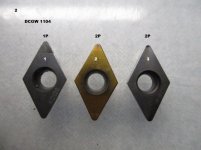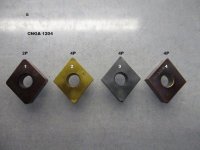It would seem to me..
You are using the natural loading of the tool/machine efficiently;
-it is quite heavy absorbing vibration
-uses oil/gibs, and oil is very efficient (cube of volume pwr 4 iirc) at absorbing vibration
-yes, there is *Very Little* oil in the (scraped, no ?) gib/ways pockets but it really Does Not Like to vibrate
Similar to endless stories about guys using CNC machines, old, with slop of high levels, and making great parts for 10-20 years past "service opportunities".
By using smart tool paths on the cnc, using natural loading to keep chatter out, similar to manual tools.
In general lathes don´t actually need to be built very well, to work well, they just need to be heavy and rigid, for their size.
Endless russian, east european, old us, old european and other old machines were built so-so, but when done very heavy, they work extremely well, even with tons of slop in mounts, screws, etc.
There are, imo, surface-area-cubed and length pwr of 4 issues, why bigger lathes are vastly better- unless the smaller ones are made extraordinarily well (schaublin, weiler, moore et al for those with lots and lots of money).
You get huge dampening from a little larger surface areas in the gibs, from the suction/oil/hydraulic effects x power 4 to re-inforce it.
So the old manual lathe might not get to a point very accurately from the dials, but once adjusted there, it really does not want to bounce around = chatter.
Even if ways/gibs are banana-shaped, or loose in some areas, if they are tight at point of contact, typically they would work really well.
And mostly, often, even if they are loose, because lathe cutting is loading the tool against the ways, continuously.
I cut a fairly hard piece in terms of sizing, tight fit around 0.01 mm, in (easy) steel, about 2-4 cm long iirc.
Afterwards, I noticed I never tightened the qctp toolholder clamp, it was just dropped there.
10-20 passes or so, few years back.
Shameless beg.
I would appreciate trying some CBNs, if You have 2 extras, btw.
All my work is on steel, some hardened.
Most especially in threading (TGP high precision rods, for making Very Good Threads), if at all possible.
Happy to share details offline.
Maybe but I cut hard steel and ball screw ends with cbn on a 70 year old 14-1/2 south bend and tight or rigid or decent surface footage are most certainly not in it's vocabulary.
But .0003 out of size full top cbns are free for me from the scrap off the grinders so tool life.... not an issue.
Bob






